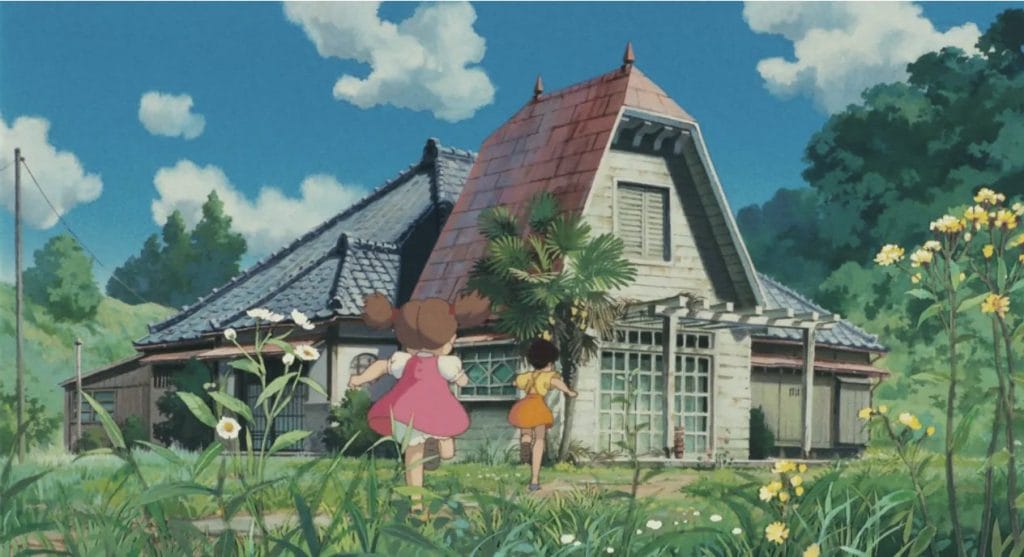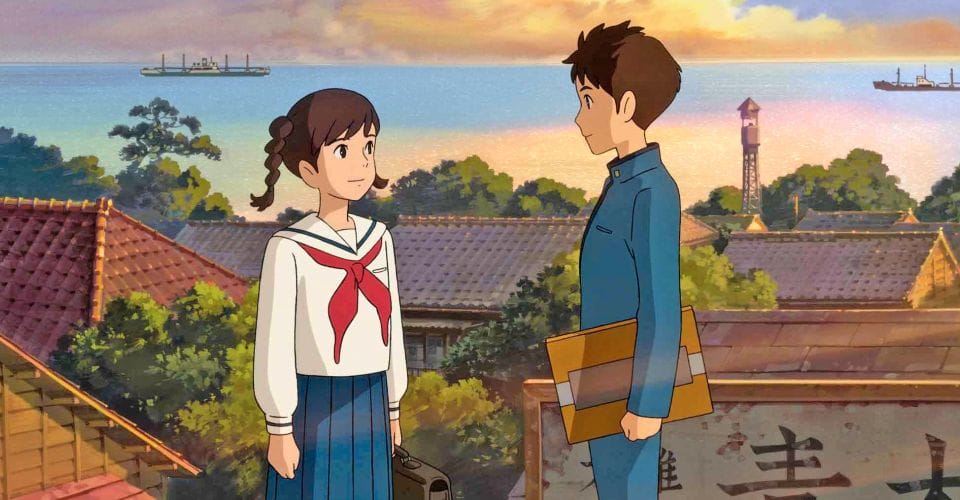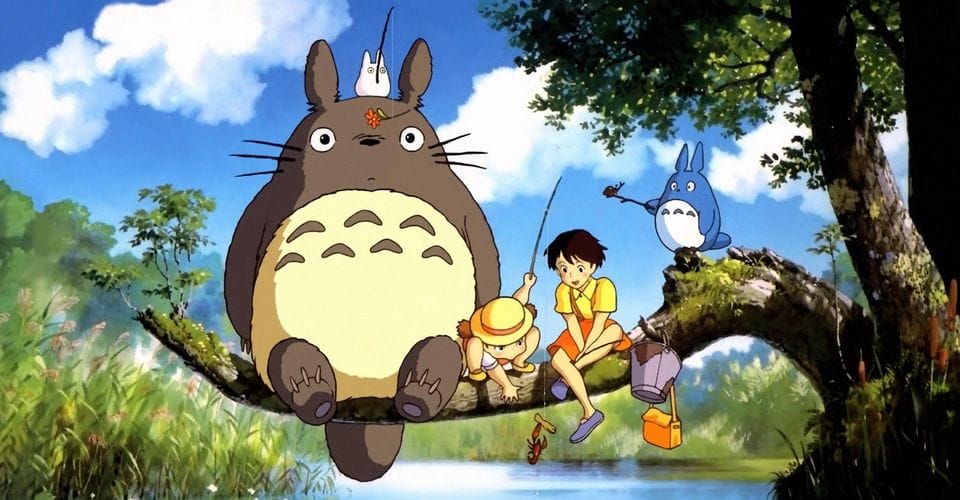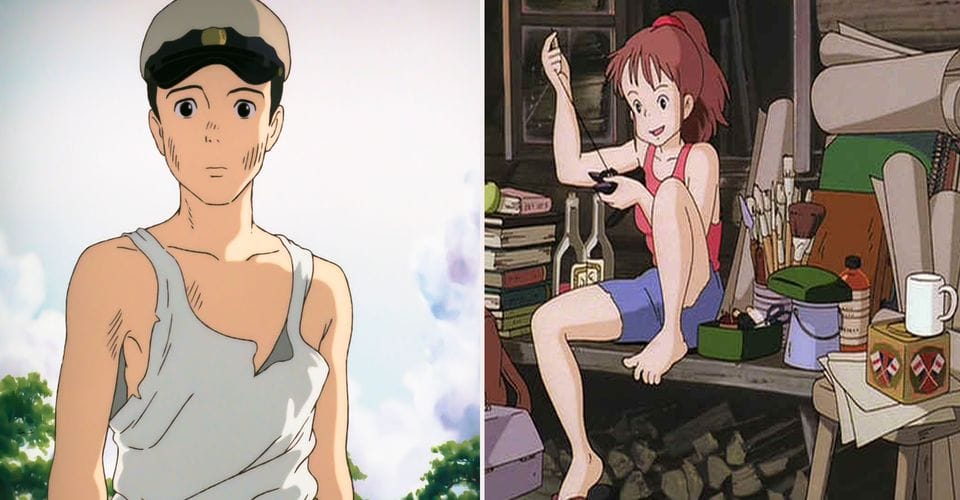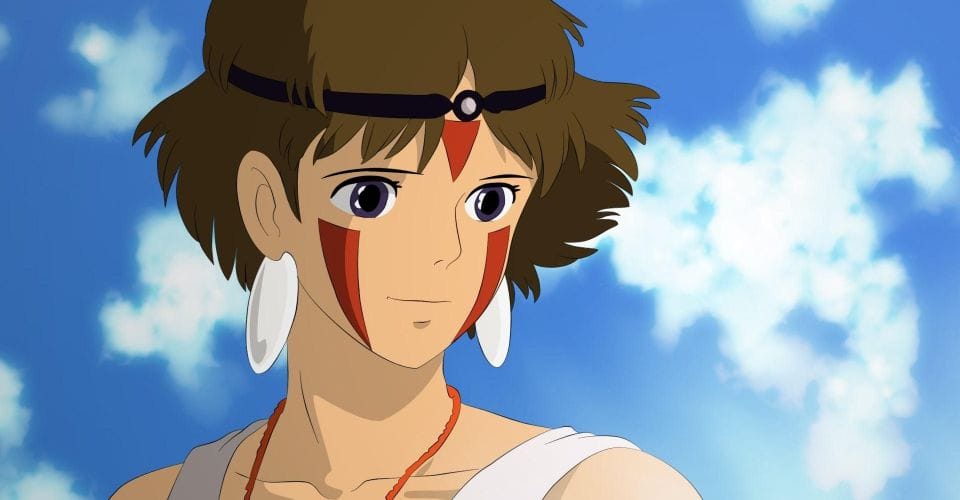Blog
Studio Ghibli: 15 Things You Never Knew About Princess Mononoke
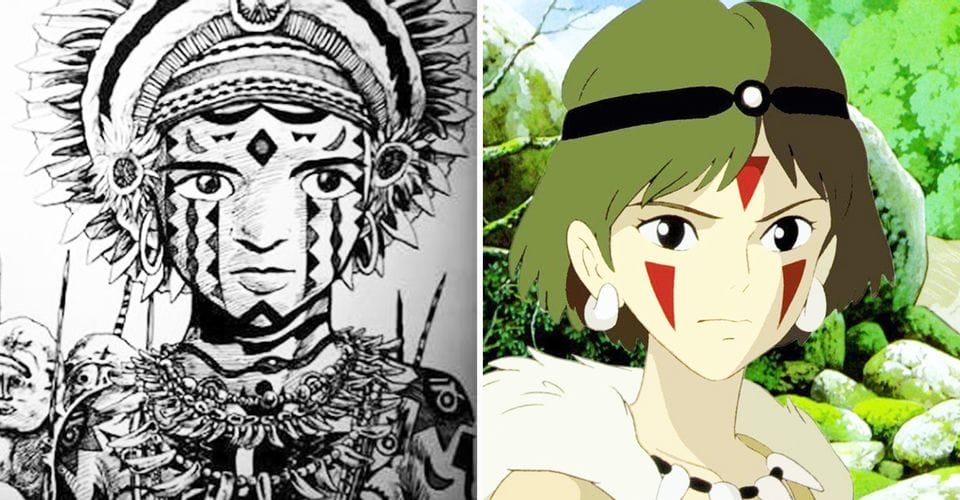
With powerful themes and a compelling story, Princess Mononoke has captured the hearts of fans for years. Let’s take a closer look at the Ghibli tale.
In Japan, Princess Mononoke was first released on July 12, 1997, and the animated film officially celebrates the 24th anniversary this year. In Japan, the movie quickly rose to become the highest-grossing film of the year, until it was surpassed by Titanic. With powerful themes surrounding the consequences of mankind’s development and environmental degradation, Princess Mononoke is widely considered a timeless Studio Ghibli classic.
For years, Studio Ghibli has swept audiences away with imaginative films like My Neighbor Totoro, Kiki’s Delivery Service, and Spirited Away. The creative mastermind, Hayao Miyazaki, has captured the imagination of fans for generations. Over the years, he has repeatedly announced (and broken) his plans of retirement. In February, Miyazaki made another official announcement, this time he’s back to work on another film, with plans to coincide with the Tokyo Olympics in 2020.
Although there’s no word yet about the film’s title or plot, some believe that Miyazaki intends on expanding on a short film created for the Studio Ghibli Museum in Mitaka, Japan. Miyazaki has hinted about possibly moving forward with a longer film inspired by Boro the Caterpillar, a film created for the Ghibli museum.
In honor of its two decades of longevity, here are 15 Things You Never Knew About Princess Mononoke.
15. Hayao Miyazaki Was Inspired To Create The Film Because Of The Yugoslav Wars

Several prominent themes found within Studio Ghibli’s Princess Mononoke involve development and environmental destruction. Others have felt a strong, equally poignant theme of a loss of innocence.
In an interview with Empire, Hayao Miyazaki expanded upon this idea, stating that he was profoundly impacted by the wars in the former Yugoslavia. Before Princess Mononoke, Miyazaki had expressed some of his emotions surrounding the war in the film Porco Rosso.
Although he had originally intended on creating a movie with a light tone, Miyazaki shared some of his mixed feelings on the war with his art: “I learned that mankind doesn’t learn. After that, we couldn’t go back and make some film like Kiki’s Delivery Service. It felt like children were being born to this world without being blessed. How could we pretend to them that we’re happy?”
14. The Forest Near Irontown Is Inspired By An Actual Nature Preserve

The enchanting forest shown in Princess Mononoke might seem like something only out of a dream, but believe it or not, it is actually based on a real-life location. In the Southern region of Japan, a forest located on Yakushima island served as the main source of inspiration for the film.
Kazuo Oga, one of the leading art directors at Studio Ghibli, spent time observing the lush interior of Shiratani Unsuikyo forest. His artwork and sketches of the land were a primary source of inspiration when working on Princess Mononoke. The forest is located about 800 meters above sea level, and it is affectionately referred to as “Princess Mononoke Forest” by fans.
Sadly, we haven’t heard any reports of any Kodama sightings, but we’ll keep our eyes and ears open.
13. An Earlier Draft Included San Being Sent To Marry A Monster

In the original draft of Princess Mononoke, Miyazaki had envisioned something completely different for San. In an early concept, San was thought to be the third princess of a kingdom. Later, she was sent off to marry a monster. In Japanese, the word “san” translates as “three” and so her name refers to San being the third daughter. However, the overall story was scrapped for the final version of the film.
Miyazaki later changed the concept to the movie’s current plot, San being the third “child” of the formidable wolf goddess, Moro. In the final version of the film, it is explained that San was found by Moro in the forest. Moro crossed first paths with San’s parents, who were destroying a part of the forest. The fearsome wolf goddess attacked them, and her parents abandoned San and ran away. In turn, Moro took San under her wing and raised her as her own cub.
12. Miyazaki Was Inspired By A Manga About A Tribe From Papua New Guinea

Over the years, Hayao Miyazaki and the team of Studio Ghibli have garnered a wide variety of inspiration for their films. While many Ghibli films have portrayed environments which are actually real life locations, other times, characters have also been inspired by other cultures around the world.
For Princess Mononoke, the team was inspired by a manga entitled Mudmen. Created by manga artist Daijiro Morohoshi, the manga’s title refers to the Asaro Mudmen from Papua New Guinea. If the whole connection might seem like a stretch, stay with us for a bit, and we’ll explain further.
In an interview with Kentaro Takekuma, Hayao Miyazaki expressed how Mudmen had a profound influence on his work. On Twitter, Takekuma shared some side by side images suggesting a connection between characters from Mudmen and San and the Forest Spirit from Princess Mononoke.
11. Author Neil Gaiman Helped To Adapt The English Script

Princess Mononoke has been remembered for being one of the most successful animated films of all time in Japan. Although adapting the film into English might seem like a daunting task, author Neil Gaiman was up for the challenge. At the time, Miramax was working closely with Studio Ghibli to bring the film’s magic to an American audience. However, Gaiman had to find a subtle balance between appeasing the team of Studio Ghibli and also the execs over at Miramax, who preferred a more Western approach. In the end, Gaiman created two separate scripts, in order to satisfy both sides of the coin.
Not only was Gaiman given the responsibility of working on the script, but he had to ensure that the words would match the character’s facial expressions. According to Gaiman’s website, the dubbed movie only includes about eighty-five percent of the original film, and sadly, some of Miyazaki’s specifications were left out of the final cut.
10. The Original Story Focused On A Samurai’s Daughter And A Magical Cat From The Mountains

The story of Princess Mononoke is highly thematic in nature, exploring the dichotomy between humankind and the negative consequences of deforestation. However, the original concept of the tale was not always so complex.
In 1980, Hayao Miyazaki had been working on an early draft of Princess Mononoke, but the first story is an entirely different approach. Miyazaki’s ideas were later published in the hardcover book, Princess Mononoke: The First Story.
Although the story might seem totally different from the actual Princess Mononoke that we’ve come to love, other Ghibli fans have noticed similarities between a Totoro-esque character who is found with the main female protagonist in the story. In the book, there’s also a reference to an “Iron Town”, which is the same name of the city found in the final Princess Mononoke film.
9. John Lasseter, Head Of Pixar, Was Heavily Inspired By Miyazaki

Disney addicts and Pixar buffs will undoubtedly know John Lasseter for his role of the chief creative officer of Pixar Animation Studios and Walt Disney Animation Studios. In multiple interviews, Lasseter has expressed his profound love and admiration for Hayao Miyazaki and his work with Studio Ghibli.
Over the years, Lasseter has visited Miyazaki in Japan, and also maintains that Studio Ghibli is a strong influence on his work. Lasseter has even included a Studio Ghibli easter egg of his own, specifically by including a Totoro character in Toy Story 3. In a tribute at Tokyo Film Festival, Lasseter expressed that whenever he’s feeling like he’s in a rut, all he needs to do is watch a Studio Ghibli film and he’ll be teaming with inspiration again.
In a similar vein, Dave Filoni, creator of Star Wars: The Clone Wars and Star Wars Rebels, has also cited Princess Mononoke as a major inspiration. The character of San is said to have inspired Anakin Skywalker’s Padawan, Ahsoka Tano.
8. It Broke Box Office Records

For fifteen years, Steven Spielberg’s E. T. the Extra-Terrestrial held the title as the highest grossing film in Japan. That is, until Princess Mononoke hit theaters, and suddenly everything changed. According to the Washington Post, some fans traveled hours to watch the highly anticipated film in theaters. With an intriguing, unique blend of characters and a compelling storyline, Princess Mononoke appeals to generations of fans.
Over the years, Hayao Miyazaki has broken box office records with successful films like Spirited Away, Howl’s Moving Castle and Princess Mononoke. Last November, Director Makoto Shinkai’s animated film, Your Name, surpassed Princess Mononoke, taking the title of the fourth highest grossing box office film in Japan.
Spirited Away still reigns supreme, and in terms of Japan’s highest-grossing domestic box office records, Howl’s Moving Castle ranks third, and Princess Mononoke takes fourth place.
7. There Was A Stage Adaptation In 2012, First In London And Then In Japan

The mere thought of adapting a Studio Ghibli film to the stage might seem nigh impossible, but believe it or not, it’s actually been done before. In 2012, a team of Ghibli-obsessed fans from Whole Hog Theater launched an ambitious Kickstarter project, seeking help to fund their unique stage adaptation of Studio Ghibli’s Princess Mononoke. Within a year, Whole Hog Theater received permission from Studio Ghibli to adapt Princess Mononoke on stage. At the end of their Kickstarter, the team had amassed a total of £9,425, well over their initial £5,000 goal.
Soon after, a series of performances were held in London from April 2 through 6 at the New Diorama Theatre. The entire list of performances were sold out in less than 72 hours, prompting a frenzy of response from fans across the globe. Soon after, the production took off to Tokyo, where they performed additional sold out performances at the AiiA Theater.
6. Miyzaki Confirmed A Fan Theory That The Movie Highlights Leprosy

In the original Japanese version of Princess Mononoke (Mononoke Hime), the movie never explicitly states that the characters in Irontown have leprosy. The film employs the Japanese word “gyobyo” which translates as an “incurable disease.” Several other websites have speculated that the characters are leprosy patients, as they explain how they were saved by Lady Eboshi, who gave them a place to stay when there was nowhere for them to turn.
January 31 is World Leprosy Day, a date which helps shed light on leprosy and how people cope. In an interview with All Nippon News Network, Hayao Miyazaki explained the matter a little further. “While making Princess Mononoke, I thought I had to depict people who are ill with what’s clearly called an incurable disease, but who are living as best they can,” Miyazaki explained in the interview.
When he was working on Princess Mononoke, Miyazaki had also visited patients with Hansen’s Disease, or leprosy, in Tokyo.
5. Miyazaki Was Inspired By Actual Blacksmiths That He Remembered From His Childhood

For the workers in Irontown, Miyazaki drew from his own personal experiences throughout his childhood. In an interview with Hayao and his older brother, Arata Miyazaki, the two explained how they were fascinated by blacksmith work. Every day when they would walk home from school, they would become overwhelmed with curiosity and stop to watch the blacksmiths at work.
“Later on, after learning about the many aspects of iron manufacturing and their consequences to our society and nature, I changed my opinion about iron manufacturing. Mastering iron manufacturing techniques made it possible for primitive people to become powerful conquerors of Nature and of other, less civilized, ethnic groups… Anyway, my childhood encounter with iron manufacturing was certainly one of the primary inspirations for creating the movie Mononoke Hime.” Miyazaki explained in an interview about How Mononoke Hime Was Born.
4. First Animated Movie To Win Best Picture At The Japanese Oscars

In 1997, Princess Mononoke won three Mainichi Film Awards, including Best Japanese Movie, Best Animation, and Japanese Movie Fans’ Choice. A year later, the film was awarded Best Picture at the 21st annual Japan Academy Awards. At the time, Princess Mononoke was submitted to the Academy Awards for Best Foreign Language Film, but sadly enough, it was not nominated. In 2000, Hayao Miyazaki was nominated for an Annie Award, highlighting his Outstanding Individual Achievement for Directing in an Animated Feature Production.
Studio Ghibli films are well-loved by fans across the globe, but none of the movies had received any Academy Awards at the time. In 2003, Hayao Miyazaki finally received an Academy Award for Best Animated Feature Film for Spirited Away. In 2006, Miyazaki received a nomination for Best Animated Feature Film for Howl’s Moving Castle, and again in 2014 for his work on The Wind Rises.
3. Miyazaki Was Influenced By John Ford Western Movies

Miyazaki certainly isn’t one to shy away from paying homage to other’s art. Creating a monumental work like Princess Mononoke involved in-depth observation and natural study of real-life locales like Yakushima Island in Japan, but it also combined influences from other places in the world.
Miyazaki also credits esteemed director John Ford as another source of inspiration for Princess Mononoke. The late American director took the helm for classics like Stagecoach, The Grapes of Wrath and The Searchers.
Inspired by the film My Darling Clementine, Miyazaki wanted to portray a gritty, frontier feeling with Tatara Ba (Iron Town) in Princess Mononoke. Instead of relying on more traditional, familiar characters, Miyazaki wanted the town to encompass “characters from outcast groups and oppressed minorities who rarely, if ever, appear in Japanese films.”
2. Miramax Wanted To Recut The Film, But Ghibli Producers Sent Them A Katana And A Note Stating, “No Cuts.”

Before Princess Mononoke was released for American audiences, Miramax executives had wanted to make some serious edits. Harvey Weinstein, one of the co-founders of Miramax, had wanted to trim the running time, but Hayao Miyazaki strongly disagreed.
For years, there were reports that Miyazaki purportedly sent an actual samurai sword to Weinstein including the message, “No cuts.” The whole situation sounds like an early draft for Kill Bill Volume 3, but in all seriousness, we definitely think that Tarantino would approve.
In an interview with The Guardian, Miyazaki cleared up the rumors once and for all. “Actually, my producer did that. Although I did go to New York to meet this man, this Harvey Weinstein, and I was bombarded with this aggressive attack, all these demands for cuts. I defeated him.”
1 . Over 80,000 Hand-Drawn Cels Were Created For The Movie

For modern animated films, CGI reigns supreme, yet Studio Ghibli films seem to capture a sense of nostalgia for simpler times. Hand-drawn animation is a staple of Hayao Miyazaki’s artistic style, and Princess Mononoke is no exception to the rule.
In fact, only ten percent of the entire movie involved computer generated animation. Instead, artists were employed to work on the hand drawn elements of the film. Many of Miyazaki’s own concept art for the film included line drawings and watercolor sketches.
According to The Art of Princess Mononoke, the film was in production for three years. Artist Kazuo Oga is credited with creating mesmerizing background artwork, including picturesque landscapes involving dreamy watercolors. Over the course of three years, over 80,000 hand-drawn cels were created for the film.
—
Do you have any other Princess Mononoke trivia that you’d like to share? Let us know in the comments!

